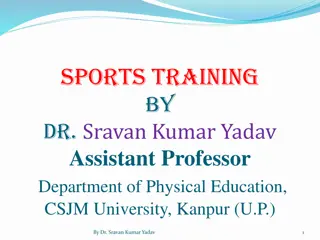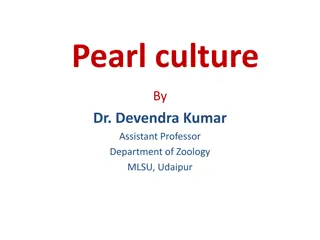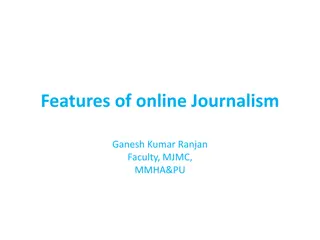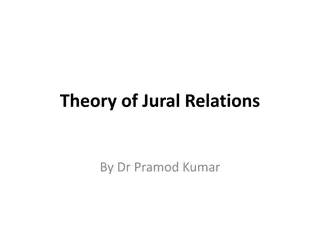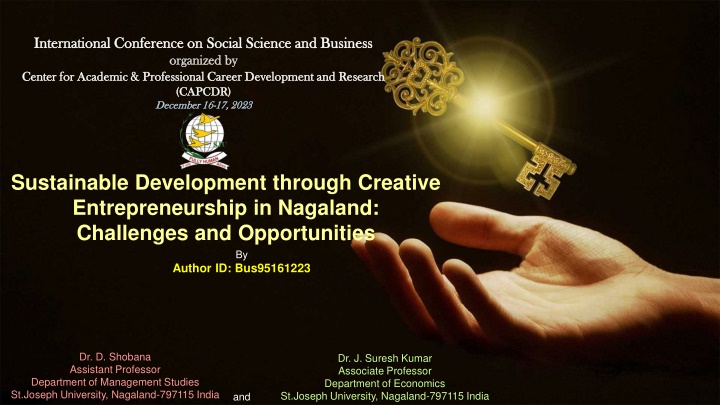
Sustainable Development through Creative Entrepreneurship in Nagaland
Explore the potential and challenges of creative entrepreneurship for sustainable development in Nagaland, with a focus on promoting economic growth while preserving cultural heritage. Learn about the opportunities, constraints, and policy interventions vital for nurturing a thriving ecosystem of creative businesses in the region.
Download Presentation

Please find below an Image/Link to download the presentation.
The content on the website is provided AS IS for your information and personal use only. It may not be sold, licensed, or shared on other websites without obtaining consent from the author. If you encounter any issues during the download, it is possible that the publisher has removed the file from their server.
You are allowed to download the files provided on this website for personal or commercial use, subject to the condition that they are used lawfully. All files are the property of their respective owners.
The content on the website is provided AS IS for your information and personal use only. It may not be sold, licensed, or shared on other websites without obtaining consent from the author.
E N D
Presentation Transcript
International Conference on International Conference on Social Science and Business organized by organized by Center for Academic & Professional Career Development and Research Center for Academic & Professional Career Development and Research (CAPCDR) (CAPCDR) December 16 December 16- -17, 2023 Social Science and Business 17, 2023 Sustainable Development through Creative Entrepreneurship in Nagaland: Challenges and Opportunities By Author ID: Bus95161223 Dr. D. Shobana Assistant Professor Department of Management Studies St.Joseph University, Nagaland-797115 India Dr. J. Suresh Kumar Associate Professor Department of Economics St.Joseph University, Nagaland-797115 India and
Sustainable Development through Creative Entrepreneurship in Nagaland: Challenges and Opportunities
This research study investigates the potential of creative entrepreneurship as a catalyst for sustainable development in Nagaland, a culturally rich and diverse region in Northeast India. The study aims to provide a comprehensive understanding of the challenges faced by creative entrepreneurs in Nagaland, while also identifying opportunities for growth and development in this sector. The findings of this study reveal a complex landscape for creative entrepreneurship in Nagaland. On one hand, the region's rich cultural heritage and tradition provide a fertile ground for creative enterprises to flourish. Handicrafts, handloom, music, and other creative industries have a significant potential to generate income and employment opportunities, particularly for marginalized communities. However, several challenges impede the growth of these enterprises, including limited access to capital, lack of market access, inadequate infrastructure, and regulatory hurdles. Moreover, the study highlights the critical role of policy interventions in supporting and nurturing the creative entrepreneurship ecosystem. Government initiatives aimed at providing financial support, skill development, market linkages, and infrastructure improvement are crucial for fostering a conducive environment for creative entrepreneurs. Additionally, the study underscores the importance of incorporating sustainable practices in creative businesses to ensure long-term viability and positive environmental impact. Abstract Key words: Creative entrepreneurship, sustainable development, opportunities, challenges, marginalized communities, skill development and Government initiatives
Introduction The state of Nagaland, located in northeastern India, is quite appealing and has seen notable socio-economic changes recently. A key topic of discussion as the state struggles to balance protecting its distinctive cultural legacy with promoting economic expansion is the role that creative entrepreneurship plays in attaining sustainable development. This study examines the potential and difficulties that arise from this dynamic interaction between sustainable development and creative entrepreneurship in Nagaland. In the context of Nagaland, a state characterized by diverse indigenous communities and ecosystems, achieving sustainability necessitates a delicate balance between economic progress and cultural preservation. Creative entrepreneurship, with its emphasis on innovation, cultural expression, and community engagement, has gained prominence as a catalyst for sustainable development (Bauwens & Kostakis, 2014; Matarasso, 2016). Encouraging inclusive and sustainable growth in Nagaland, where traditional arts, crafts, and cultural practices are essential to the identity of many tribes, requires leveraging the creative business. This study will delve into the specific challenges faced by creative entrepreneurs in Nagaland, including issues related to infrastructure, access to markets, and the preservation of cultural authenticity. Simultaneously, it will explore the vast array of opportunities that creative entrepreneurship presents, from promoting tourism to empowering local communities and preserving indigenous knowledge.
Review of Literature Belitski, M. & Desai, S. (2015) investigated the mechanisms via which creativity might impact economic development in cities, delving into the "black box" of creativity, entrepreneurship, and economic development. They suggest that creativity spillovers happen and can be inhibited by a creativity filter, much like the knowledge spillover theory of entrepreneurship. They look at the interactions that affect urban economic development between creativity and entrepreneurship as well as creativity and a melting pot setting. By demonstrating the existence and functioning of a creative filter, they contribute to the body of existing literature by analyzing data from 187 cities across 15 European nations between 1999 and 2009. Obinna, I & Blessing, N (2014), conducted a study in Nigeria, and highlighted business entrepreneurship has been growing, bringing about changes and stimulating economic development in certain areas, particularly in the area of creating jobs for oneself and making a profit alone. However, social entrepreneurship the application of entrepreneurship's qualities of creativity, invention, and motivation mixed with the urge to solve the most pressing social problems in society is what we need to meet the challenge of sustainable development. Using a cross-section of business owners and interest groups from Imo and Abia States, the study assessed the contributions of social entrepreneurship and its fundamental components to sustainable development. While the data was processed using a straightforward correlation analysis. It was discovered that the lack of imagination and innovation among our entrepreneurs has prevented social entrepreneurship from making a meaningful contribution to sustainable development. Nieuwland,S & Lavanga, M (2020) authored a piece that examines how creative entrepreneurs view the growth of the tourism industry, focuses on creative placemaking in the industry, and considers their contribution to the industry's sustainable development. Their findings complicate their interpretation of the relationships among place making, tourism, and creative enterprises. Even if the innovative business owners in our sample saw themselves as placemakers, concerns like inclusivity, equity, and preventing gentrification are still not sufficiently addressed. This study highlights the need of considering the fundamental question of whose city Rotterdam is and who stands to gain from the urban and tourism development strategy from a policy standpoint.
Nagaland, a state renowned for its vibrant cultural diversity and unique indigenous traditions, stands at a crossroads where the pursuit of sustainable development intersects with the potential of creative entrepreneurship. While the integration of creative industries into economic frameworks is increasingly recognized as a driver for sustainable development globally, the specific challenges and opportunities in the context of Nagaland remain relatively unexplored. The central problem that this research seeks to address is the identification and examination of the multifaceted challenges hindering the effective integration of creative entrepreneurship into the sustainable development paradigm in Nagaland. These challenges span various dimensions, including but not limited to infrastructure, market access, cultural preservation, and policy frameworks. Understanding these challenges is crucial to developing targeted interventions and policy recommendations that can leverage the rich cultural capital of Nagaland for sustainable economic growth. Moreover, the research aims to uncover the untapped opportunities within creative entrepreneurship that can serve as catalysts for positive change in Nagaland. By investigating how creative enterprises can contribute to job creation, community empowerment, and the preservation of indigenous knowledge, the study seeks to provide actionable insights for policymakers, practitioners, and community stakeholders. Through a comprehensive analysis of the intricate interplay between sustainable development goals, cultural preservation, and the creative economy, this research aspires to bridge existing knowledge gaps and contribute to the development of context-specific strategies for Nagaland. In doing so, it is anticipated that the outcomes of this study will not only inform the academic discourse but will also serve as a practical guide for fostering a sustainable and culturally enriched entrepreneurial ecosystem in Nagaland. RESEARCH STATEMENT OF THE PROBLEM
Column Style You can simply impress your audience and add a unique zing and appeal to your Presentations. You can simply impress your audience and add a unique zing and appeal to your Presentations. I hope and I believe that this Template will your Time, Money and Reputation. Get a modern PowerPoint Presentation that is beautifully designed. Easy to change colors, photos and Text. You can simply impress your audience and add a unique zing and appeal to your Presentations. You can simply impress your audience and add a unique zing and appeal to your Presentations. LOREM IPSUM DOLOR SIT AMET, CU USU AGAM INTEGRE IMPEDIT. ALLPPT Layout Clean Text Slide for your Presentation You can simply impress your audience and add a unique zing and appeal to your Presentations. I hope and I believe that this Template will your Time, Money and Reputation. I hope and I believe that this Template will your Time, Money and Reputation. You can simply impress your audience and add a unique zing and appeal to your Presentations. I hope and I believe that this Template will your Time, Money and Reputation. Get a modern PowerPoint Presentation that is beautifully designed. Easy to change colors, photos and Text. You can simply impress your audience and add a unique zing and appeal to your Presentations. You can simply impress your audience and add a unique zing and appeal to your Presentations. I hope and I believe that this Template will your Time, Money and Reputation. Get a modern PowerPoint Presentation that is beautifully designed. Easy to change colors, photos and Text. You can simply impress your audience and add a unique zing and appeal to your Presentations. You can simply impress your audience and add a unique zing and appeal to your Presentations. You can simply impress your audience and add a unique zing and appeal to your Presentations.
Creative Industry and Creative Entrepreneurship World Creativity and Innovation Day (WCID) was declared by the UN in an effort to increase public awareness of the importance of creativity and innovation in all facets of human development. The definition of the phrase "creative economy" is also vague. It is a dynamic idea that results from the interaction of information, technology, intellectual property, and human creativity. To put it simply, the "creative industries" refer to the knowledge-based economic activities that support them. The global economy is significantly transformed by the creative industries, which include publishing, design, new media, artistic endeavors, audiovisual products, and visual arts. These businesses also generate capital, jobs, and export profits. Because culture instills a feeling of identity, creativity, and innovation in individuals and communities, it is a crucial element of sustainable development. However, creativity and culture also have a huge non-financial value that supports the growth of inclusive societies as well as cross-cultural communication and understanding. Among the world's busiest economic sectors nowadays, the creative industries offer developing nations fresh chances to overtake more established and quickly growing economic sectors. (Nagaland Post, 2023)
SIGNIFICANCE OF THE STUDY Regional Relevance: Nagaland, being a state in Northeast India, has its unique socio-economic and cultural context. This study addresses the specific challenges and opportunities related to sustainable development and creative entrepreneurship in Nagaland, making it particularly relevant for the region. Promotion of Sustainable Development: The focus on sustainable development signifies a commitment to long-term economic, social, and environmental well-being. By exploring how creative entrepreneurship can contribute to sustainability, the study may provide valuable insights into fostering a balanced and resilient development model. Creative Entrepreneurship Emphasis: The study's emphasis on creative entrepreneurship is noteworthy. Creative industries not only contribute to economic growth but also play a crucial role in cultural preservation, identity building, and community development. Understanding how creative entrepreneurship can be harnessed for sustainable development can have broader implications for similar regions. Identification of Challenges: By addressing the challenges faced by creative entrepreneurs in Nagaland, the study can assist policymakers, business leaders, and community stakeholders in developing targeted interventions. Overcoming these challenges is crucial for creating an environment conducive to sustainable business practices. Opportunity Mapping: The identification and exploration of opportunities in the realm of creative entrepreneurship can serve as a roadmap for individuals and organizations interested in investing in Nagaland. This can lead to the creation of new businesses, job opportunities, and economic growth. Cultural Preservation: Nagaland, like many other regions, faces the challenge of balancing economic development with the preservation of its unique cultural heritage. Creative entrepreneurship, if done thoughtfully, can contribute to the preservation and promotion of cultural identity. Policy Implications: The findings of the research may have direct implications for policy formulation. Policymakers can use the insights gained from this study to design and implement policies that foster creative entrepreneurship and sustainable development in Nagaland. Contribution to Academic Knowledge: The study adds to the body of knowledge in the fields of sustainable development and entrepreneurship, especially in the context of a specific region. It can serve as a reference for researchers, academicians, and students interested in understanding the interplay between creativity, entrepreneurship, and sustainable development.
OBJECTIVES OF THE STUDY Objective 5 Objective 4 To identify existing policies related to creative entrepreneurship and sustainable development and to provide recommendations for policy improvements or new policy initiatives. Objective 3 To investigate the impact of creative entrepreneurship on the preservation of cultural heritage in Nagaland and explore the social implications of creative business activities. Objective 2 To assess the current level of sustainable development in Nagaland and examine how creative entrepreneurship contributes to or hinders sustainable development. Objective 1 To identify potential opportunities for creative entrepreneurs in Nagaland and investigate emerging trends and markets that can be leveraged. To identify and analyze the challenges encountered by creative entrepreneurs in Nagaland
RESEARCH METHODOLOGY Study Design The present study is descriptive in nature. Type of Data The published government reports, articles from journals, websites etc., were used for secondary data collection purpose. Data Analysis Qualitative Analysis: Systematic literature reviews have been done to extract insights into the degrees of challenges and opportunities. Conducted a content analysis of qualitative data to understand the impact of creative entrepreneurship on cultural heritage preservation. Reviewed existing policies related to creative entrepreneurship and sustainable development in Nagaland. By employing this comprehensive research methodology, the study aims to provide a thorough understanding of the challenges and opportunities associated with sustainable development through creative entrepreneurship in Nagaland.
CHALLENGES FACED BY THE CREATIVE ENTREPRENEURS IN NAGALAND Even though, the creative entrepreneurs are playing a vital role in the economic development of the state, they are facing following challenges also: i. Limited Access to Markets: Many creative entrepreneurs face challenges in reaching broader markets, both nationally and internationally. Limited infrastructure and connectivity in certain regions of Nagaland may hinder market access (source: ADB, "Assessment of Connectivity in Northeast India," 2016). ii. Financial Constraints: Insufficient access to funding and financial resources can impede the growth and sustainability of creative businesses (source: World Bank, "Financing Creative Industries," 2013). iii. Regulatory Hurdles: Creative entrepreneurs may encounter challenges related to regulatory frameworks, licensing, and bureaucratic processes, affecting the ease of doing business (source: UNCTAD, "Creative Economy Outlook," 2018). iv. Lack of Skill Development Opportunities: Limited availability of skill development programs and educational opportunities tailored to the creative industries may hinder the development of entrepreneurial skills (source: UNESCO, "Creative Economy Report," 2013). v. Cultural and Artistic Preservation: While preserving cultural heritage is a crucial aspect of creative entrepreneurship, there can be challenges in balancing innovation with the preservation of traditional art forms and cultural practices (source: ILO, "Culture at Work: Creative Workers and Sustainable Work," 2014). vi. Infrastructure Deficiencies: Inadequate infrastructure, such as studio spaces, exhibition venues, and reliable internet connectivity, can pose challenges for creative entrepreneurs (source: UNDP, "Creative and Cultural Industries in Nagaland," 2019). vii. Limited Networking Opportunities: Building networks and collaborations is essential for creative entrepreneurs, and the lack of structured networking opportunities can be a challenge (source: ITC, "Promoting Creative Industries for Sustainable Development," 2017). viii. Intellectual Property Concerns: Protecting intellectual property rights is crucial for creative entrepreneurs, and challenges in this area can affect the willingness to invest in innovation and new creations (source: WIPO, "Creative Industries and Development," 2010).
POTENTIAL OPPORTUNITIES FOR CREATIVE ENTREPRENEURS IN NAGALAND 1. Cultural and Handicraft Exports: Leverage the rich cultural heritage of Nagaland to produce and export traditional handicrafts, textiles, and artifacts to national and international markets. The global demand for authentic, handmade products is a growing trend. 2. Eco-Friendly and Sustainable Products: Create and market eco-friendly and sustainable products, aligning with the global trend towards environmentally conscious consumerism. This may include sustainable fashion, organic beauty products, and eco-friendly home decor. 3. Culinary Arts and Food Tourism: Explore opportunities in culinary arts by promoting traditional Naga cuisine. Participate in the growing trend of food tourism, offering unique dining experiences and food-related events. 4. Digital and Creative Technology: Embrace digital platforms for content creation, such as digital art, animation, and virtual reality experiences. The digital economy presents vast opportunities for creative entrepreneurs to reach a global audience. 5. Cultural Events and Festivals: Organize and participate in cultural events and festivals, both locally and nationally. This can include traditional music festivals, art exhibitions, and cultural exchange programs. 6. Educational and Skill Development Programs: Establish training programs and workshops to develop creative skills within the community. This can contribute to both cultural preservation and the nurturing of a skilled workforce. Continue
POTENTIAL OPPORTUNITIES FOR CREATIVE ENTREPRENEURS IN NAGALAND 7. Collaborations with Fashion Industry: Collaborate with the fashion industry to incorporate traditional Naga designs into contemporary clothing. This can tap into the growing demand for ethically sourced and culturally inspired fashion. 8. Digital Storytelling and Content Creation: Engage in digital storytelling, creating content that showcases the cultural richness of Nagaland. This could include documentaries, online series, or social media campaigns that promote the uniqueness of the region. 9. Artisanal and Specialty Products: Explore the production of artisanal and specialty products, such as niche teas, natural skincare products, or specialty foods that highlight the local flavors and ingredients unique to Nagaland. 10. Cultural Tourism Experiences: Develop cultural tourism experiences, including guided tours, workshops, and interactive experiences that allow visitors to immerse themselves in the local culture and traditions. 11. Heritage Conservation and Restoration: Engage in projects related to heritage conservation and restoration, focusing on preserving traditional buildings, monuments, and cultural sites. 12. Community-Based Tourism Initiatives: Collaborate with local communities to develop community-based tourism initiatives, providing tourists with an authentic and immersive experience of Naga culture and lifestyle.
CONTRIBUTION OF CREATIVE ENTREPRENEURSHIP TO SUSTAINABLE DEVELOPMENT Creative entrepreneurship can significantly contribute to sustainable development, but it may also pose challenges. 1. Innovation and Sustainable Practices: Contribution: Creative entrepreneurs often embrace innovative and sustainable practices. They seek eco-friendly materials, design processes, and energy-efficient technologies. Example: Fashion designers creating clothing from recycled materials, reducing environmental impact. 2. Job Creation and Economic Growth: Contribution: Creative entrepreneurs generate employment opportunities, especially in cultural and creative industries, contributing to economic growth. Example: Artisanal crafts, music festivals, and design studios creating jobs and supporting local economies. 3. Cultural Preservation: Contribution: Creative entrepreneurship can play a role in preserving and promoting cultural heritage, fostering a sense of identity. Example: Businesses focused on traditional crafts and cultural events that contribute to the preservation of local customs. 4. Social Impact and Community Engagement: Contribution: Creative entrepreneurs often engage with communities, addressing social issues and promoting inclusivity. Example: Social enterprises using art and creativity to address social challenges, such as education or healthcare. B. Challenges and Potential Hindrances: 1. Resource Intensiveness: Some creative processes may require significant resources, potentially contributing to environmental degradation. Example: Mass production of creative products without considering resource efficiency. 2. Gentrification and Displacement: Successful creative entrepreneurship can lead to gentrification, pushing up living costs and displacing existing communities. Example: Artistic districts becoming unaffordable for long-time residents due to increased demand. 3. Globalization Impact: Global markets and demands may drive creative entrepreneurs to prioritize mass production and compromise local sustainability. Example: The pressure to meet international market standards leading to the use of non-local, unsustainable materials. 4. Consumerism and Waste: Consumer demand for trendy, disposable creative products can contribute to a culture of waste. Example: Fast fashion, where trends change rapidly, leading to a high turnover of clothing and increased textile waste.
IMPACT OF CREATIVE ENTREPRENEURSHIP ON CULTURAL HERITAGE PRESERVATION 1. Revitalizing Traditional Crafts: Creative entrepreneurs in Nagaland often focus on traditional crafts, reviving and sustaining indigenous artistic practices. Initiatives like the Nagaland Handloom and Handicrafts Development Corporation (NHHDC) promoting and marketing traditional Naga handloom products. 2. Cultural Festivals and Events: Creative entrepreneurship contributes to the organization of cultural events, promoting and preserving traditional practices. Hornbill Festival, which showcases Naga cultural heritage through traditional dances, crafts, and music. 3. Heritage Tourism Initiatives: Creative entrepreneurs in the tourism sector can play a role in preserving cultural heritage by promoting responsible tourism. Community-led initiatives offering guided tours to historical and cultural sites, providing income to local communities. 4. Digital Preservation Efforts: Creative entrepreneurs leverage digital platforms to document and preserve traditional knowledge, stories, and art. Online platforms or mobile applications showcasing Naga folk tales, art, and cultural practices. 5. Skill Development Programs: Creative entrepreneurship often involves skill development programs, passing down traditional craftsmanship to younger generations. Artisan training programs that teach traditional weaving, carving, or pottery techniques.
CHALLENGES AND CONSIDERATIONS FOR PRESERVING CULTURAL HERITAGE i. Striking reconciliation Between Tradition and Innovation: Innovative businesspeople need to find a way to reconcile maintaining tradition with responding to the needs of the modern market. ii. Ethical Sourcing: Making sure that artistic endeavors use materials sourced ethically and includes the community in a sustainable and equitable way. iii. Community Involvement: Making sure that the advantages of cultural entrepreneurship are distributed while also understanding the viewpoints of nearby communities. A comprehensive strategy involving the community, the government, and entrepreneurs is needed to preserve cultural heritage through innovative business. Consult contemporary publications, government reports, and regional cultural organizations in Nagaland for the most up-to-date and accurate information.
POLICIES RELATED TO CREATIVE ENTREPRENEURSHIP AND SUSTAINABLE DEVELOPMENT IN INDIA A. Policies related to Creative Entrepreneurship: i. Startup India: To encourage and support startups across various sectors, including creative industries. Facilitates the growth of creative startups through funding, tax benefits, and a supportive regulatory environment. ii. National Intellectual Property Rights (IPR) Policy: Promote creativity and innovation by protecting intellectual property rights. Encourages creative entrepreneurs by safeguarding their intellectual property, and fostering innovation in various sectors. iii. National Handloom Development Programme: Promote the handloom industry, preserving traditional crafts and supporting artisans. Enhances the livelihoods of weavers and promotes sustainable practices in the textile and handloom sector. iv. Craftsmen Training Scheme (CTS): Skill development for traditional crafts and artisans. Strengthens the skill base in traditional crafts, supporting creative entrepreneurs and preserving cultural heritage. Continue
POLICIES RELATED TO CREATIVE ENTREPRENEURSHIP AND SUSTAINABLE DEVELOPMENT IN INDIA B. Policies related to Sustainable Development: i. National Action Plan on Climate Change (NAPCC): Address climate change through a comprehensive strategy. Encourages sustainable practices in various sectors, fostering green entrepreneurship and sustainable development. ii. Smart Cities Mission: Develop urban areas with a focus on sustainability, technology, and innovation. Promotes sustainable infrastructure and solutions, providing opportunities for creative entrepreneurs in the urban space. iii. National Biodiversity Action Plan (NBAP): Conserve biodiversity and promote sustainable use of biological resources. Supports initiatives that integrate biodiversity conservation and sustainable development. iv. National Policy on Biofuels: Promote the production and use of biofuels for environmental sustainability. Provides opportunities for entrepreneurs in the renewable energy sector, contributing to sustainable development. Continue
POLICIES RELATED TO CREATIVE ENTREPRENEURSHIP AND SUSTAINABLE DEVELOPMENT IN INDIA C. Intersection of Creative Entrepreneurship and Sustainable Development: i. National Handicrafts Development Programme (NHDP): Promote traditional handicrafts, support artisans, and preserve cultural heritage. Aligns creative entrepreneurship with sustainable development by emphasizing traditional crafts and community involvement. ii. National Mission on Cultural Mapping and Roadmap: Map and document the cultural heritage of India. Aids creative entrepreneurs in leveraging cultural heritage for sustainable business models and tourism. iii. National Rural Livelihoods Mission (NRLM): Alleviate rural poverty through sustainable livelihoods. Supports creative entrepreneurs in rural areas, fostering sustainable practices and economic development. While these policies lay the groundwork, successful implementation depends on effective execution, continuous evaluation, and adaptation to emerging challenges and opportunities. Entrepreneurs and stakeholders should stay updated on policy developments to leverage available support for creative and sustainable initiatives.
CONCLUSION The present study sheds light on the intricate interplay between cultural preservation, economic growth, and environmental sustainability. It becomes evident that creative entrepreneurship in Nagaland holds immense potential as a catalyst for sustainable development, with opportunities to bridge tradition and innovation. The challenges identified, ranging from resource constraints to the delicate balance between globalization and local preservation, underscore the need for nuanced strategies and robust support systems. Despite these hurdles, the study recognizes the resilience of creative entrepreneurs in Nagaland and their capacity to contribute significantly to the region's holistic development. Moving forward, addressing these challenges and capitalizing on the identified opportunities are essential to unlock the full potential of creative entrepreneurship in fostering sustainable development in Nagaland.








